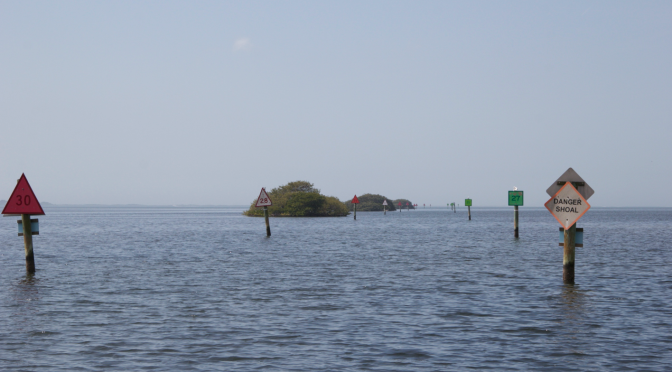Paddling out can be difficult if you do not know about channels. Channels are areas of water that are less turbulent than the sections of breaking wave. These spots are often characterized by deeper water, which prevents the waves from breaking there. These areas are the places where you paddle out when surf becomes difficult to paddle out otherwise. I’m going to go over the types of channels that you will most likely encounter when surfing in Florida.
Kaisers is a surf spot in Honolulu, Hawaii. For a bottom it has a dead reef and parts of a sunken boat. I am starting with this spot because it has a clearly defined channel like the channel in the feature image for this post. The very top of the reef, where the wave starts, there is a bump of old boat parts that juts upwards into the water column. This break can have very large surf and it can become difficult and dangerous to paddle out through if you do not use the channel. You get to this spot by walking down the jetty, jumping off it, and paddling out through the channel. The channel is marked by the channel markers. Catching a wave here means riding it down to the channel, kicking out there, and paddling back out through the channel. Getting caught inside means paddling over to the channel and then paddling out.
Beach breaks are a little more complicated than reefs because the sand on the bottom shifts from swell to swell. There is no clear markings that identify a channel. There are passes between islands, but these are not places to paddle out.
Along beachbreaks you will commonly find piers. Piers frequently create channels that allow surfers to paddle out without interference from waves. Cocoa Beach has a Pier. Frequently, one side of the pier has what resembles a channel. There is no whitewater breaking on that side of the pier. These pier channels can be dangerous. It is important to be careful when paddling out next to the pilings because they are often covered in barnacles that are very sharp. You should stay a safe distance from the piling while paddling out through these channels. Bumping against these pilings can cause harm. Be sure to look at both sides of the pier and be sure that there is a channel that you can paddle out through before attempting to paddle close to the piling. These piers can be good places to paddle out on days with larger surf.
Beach-breaks consists of two primary types. The waves either break on the sandbar, which creates a sea of water as a bay between the breaking waves and the beach, or they break on the beach(or close to the beach).
The waves that break near the beach are usually easier to make it out past the breaking waves. Typically these spots are shallower as you approach the breaking wave. Often times you can even walk out to the wave. Just as you reach the peak the bottom contour changes rapidly. The beach goes from a shallow depth to much deeper. These waves have channels but are much less pronounced than any other type of wave. They are also the easiest type of wave to paddle out along any point of the wave. For these shore pound waves there is no trough between the wave and the beach.
Now, one of the most frequent spots surfed in Florida, the sandbar. Sandbars are super fun waves on medium to large size swells. They are less consequential and very ripable. Sandbar waves break deeper than reef waves and shallow beach break waves. On large and above swells these waves can be cause the most difficulty when trying to paddle to the outside. These sandbar waves disguise their channel, making it appear as if there is no channel. Channels along beaches are easily identifiable from an arial view. From the beach this won’t be the case. At beach breaks the waves breaking on the sandbar will be positioned so close together the ends of the wave will overlap. The overlap will disguise the channel. Identifying the channels is very useful for paddling out to the lineup.
Identifying channels will help you better understand waves and how they break. It will prepare you for tricky surf and it will help you more quickly and easily reach the outside of the breaking waves.
